From Drilling to Refining: What Each Role Gains From High-Fidelity Simulation
As oil and gas operations become increasingly complex and more automated, the industry continues to grapple with one ongoing challenge: making sure that personnel at all levels-from rig crews to control room operators-have the situational awareness and technical competence to operate safely.
Risk, cost, and field conditions limit real-world training opportunities. This is why high-fidelity oil and gas simulation has evolved from a specialized training tool into a basis of workforce development. Simulation gives teams the confidence, insight, and practical understanding they need long before they step into high-hazard environments by replicating real operating scenarios with engineering accuracy.
Why High-Fidelity Oil and Gas Simulation Matters?
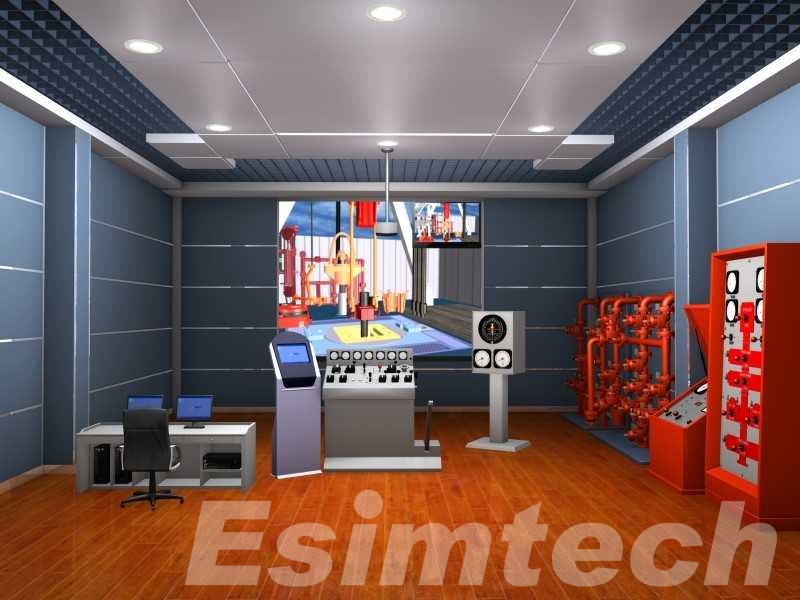
In essence, high-fidelity simulation is about creating a perfect digital twin of a physical process. Unlike simple training modules, these replicate the complex physics, chemistry, and operational parameters of real-world assets. The benefits extend to both mitigating risk and accelerating competency.
Now, imagine going through emergency shutdown procedures on a live offshore platform versus in a hyper-realistic simulator. The former is dangerous and costly, while the latter allows for failure, learning, and mastery in a zero-consequence environment. No wonder the adoption of sophisticated simulation in oil and gas industry training is skyrocketing. It bridges the experience gap for new engineers and allows veterans to safely test the limits of legacy equipment and new technologies.
How Modern Oil and Gas Simulation Software Builds Realistic Skill Pathways
Modern oil and gas simulation software has evolved into a comprehensive learning environment that mirrors the complexity of real field operations. Today’s platforms combine engineering-grade physics, control logic, and multirole interaction to help personnel build true operational competence, rather than just procedural familiarity, without relying on scripted scenarios or simplified models.
1. Engineering-Accurate Models That Reflect Real Operations
Current simulation tools integrate detailed process dynamics, equipment behavior, fluid properties, and wellbore interactions. From a pressure rise during well control to heat-transfer imbalance in a refining unit, to a compressor approaching surge, the system behaves the way real assets would. This fidelity helps trainees understand not just what to do, but why conditions evolve the way they do.
2. Multi-Discipline, Multi-User Collaboration
Rarely does an oil and gas operation depend on one person. Today, simulation platforms offer team-based scenarios when drillers, mud engineers, production operators, and panel operators interact together in real time. This is similar to the communication, timing, and decision-making required during actual operations, strengthening both technical and interpersonal skills.
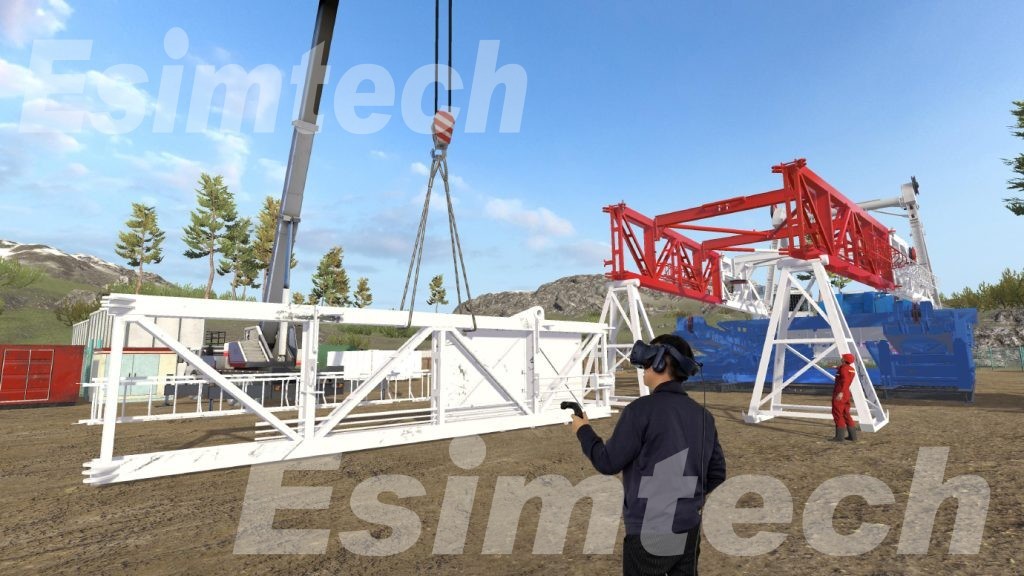
3. Structured Progression: From Fundamentals to Critical Scenarios
A major strength of modern simulation in oil and gas industry is the capability to map out clear learning pathways. First, trainees learn basic operations like normal circulation, routine startup, or parameter monitoring, before then moving on to abnormal conditions and high-risk events. Every level introduces new complexity to guide the learner from mechanical tasks to judgment-based decision making.
4. Data-Driven Performance Evaluation
Every action inside the simulator is recorded: alarm responses, valve operations, isolation procedures, reaction times, and following SOPs. Instructors can then review these records for strengths, pinpoint risk areas, and tailor follow-up training. This quantitative insight will move the training teams beyond subjective evaluation to ensure consistency across the workforce.
With these capabilities, today’s oil and gas simulation software represents a realistic, repeatable, and measurable route for the development of skilled, confident operators: one that supports immediate readiness for work and long-term professional growth.
Oil and Gas Simulation for Drilling Teams
The second that the drill bit bites into the earth, a drilling team is navigating a landscape they cannot see, pressures they cannot initially feel, and managing risks that can escalate in mere seconds. High-fidelity drilling simulation tools will be their most trusted compass and training ground. This is the technology through which the unknown becomes known. It emulates the unique rheology of the drilling mud, torque on the drill string, and subtle, telltale signs coming from downhole sensors.
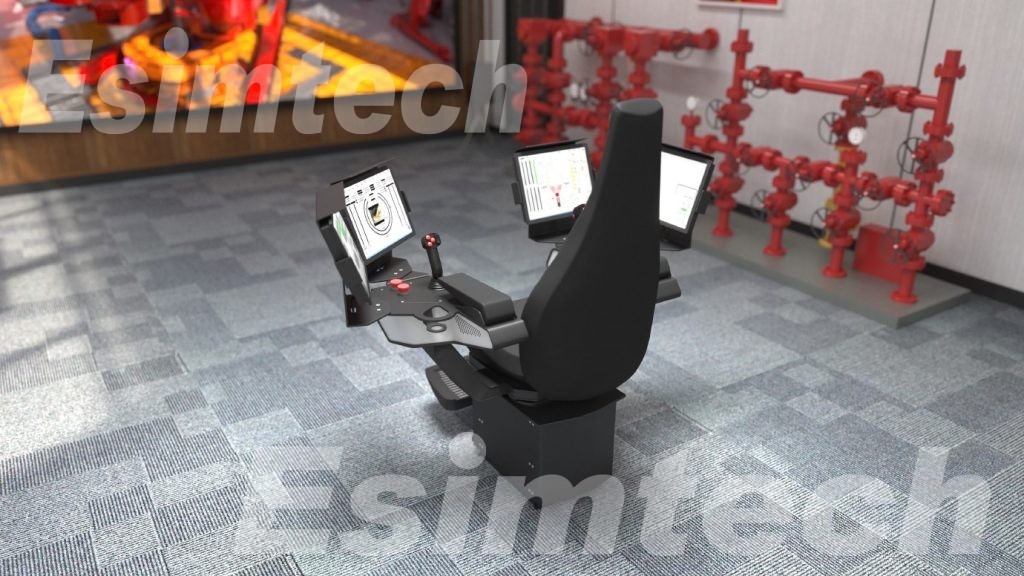
Here’s how it changes their preparation:
- Well Control Instincts: Instead of describing a “kick,” the simulator replicates the exact hydraulic signature-the pit gain, the flow check, the rising pressure. The crews don’t just learn the steps for closing the BPP but develop the critical intuition necessary to recognize the problem early and carry out the procedure under stress. They can fail safely, understand why they failed, and try again until the correct response becomes second nature.
- De-risking Complex Well Paths: Before committing to a multi-million dollar operation, engineers can “drill” the well virtually. They can navigate complex fault lines, test various bottom-hole assembly configurations, and see how the rock mechanics respond. This virtual trial run helps them anticipate where the drill string might get stuck or where ECD might fracture the formation. It’s about replacing uncertainty with a data-driven, practiced plan.
In other words, for drilling teams, this technology is not a video game; it’s a mission rehearsal. It builds a collective muscle memory across the entire crew so that when the real pressure is on, their reactions are precise, coordinated, and confident.
Simulation in Oil and Gas Industry for Production Operations
Production operations require sustained attention. Operators must make sense of shifting process conditions, react to equipment anomalies, and address alarms in pursuit of a steady and secure production. However, many of the abnormal situations they are supposed to encounter in the field occur too unpredictably or pose too much risk to reproduce in live facilities. This is where high-fidelity production simulation in oil and gas industry applications becomes really valuable.

1. Enhancing Process Understanding
Simulators permit the production teams to realize how pressures, temperatures, flow, and equipment behavior are all intertwined. If a pump starts to cavitate, a heat exchanger begins to lose effectiveness, or a valve partially sticks, trainees may observe the effects downstream in the unit. This facilitates a much deeper understanding of the process dynamics than can often be achieved in classroom instruction or by shadowing an experienced operator.
2. Building Control Room Competency
In the control room, split-second decisions can determine whether an abnormal condition is resolved quickly or escalates into a safety incident. DCS and SCADA-based simulation environments replicate real alarm logic, interlocks, and trend behavior. Operators learn to prioritize alarms, diagnose root causes, and coordinate with field personnel-all within a realistic, time-pressured environment.
3. Safe Practice for High-Risk Equipment Failures
Events such as compressor surge, pump trip, exchanger fouling, or a sudden pressure imbalance seldom can be anticipated, and attempting to simulate them in the field is unsafe. Simulation provides a controlled environment in which the operators can practice safe shutdown, troubleshooting, and recovery procedures repeatedly without risking production or equipment.
It is achieved by replicating a realistic and risk-free environment that facilitates the development of procedural accuracy and informed judgment by operators. In a growingly complex production unit, simulation in oil and gas ensures that operators stay prepared, confident, and capable of handling both routine and high-pressure situations.
Oil and Gas Simulation Software in Oil Recovery
The true challenge in the lifecycle of oil and gas comes right after production: how do we coax the remaining hydrocarbons from that complex subsurface environment? That’s the domain of enhanced oil recovery-or EOR-and it is here that advanced oil and gas simulation software transitions from a useful tool to an indispensable strategic asset.
One of the core questions that a reservoir engineer has to face is: given so many variables-anything from rock porosity and fluid dynamics, all the way to chemical interactions of injected substances-can we predict what this multi-million-dollar EOR project will achieve before we embark on it? The answer lies in the creation of a high-fidelity digital twin of the reservoir.
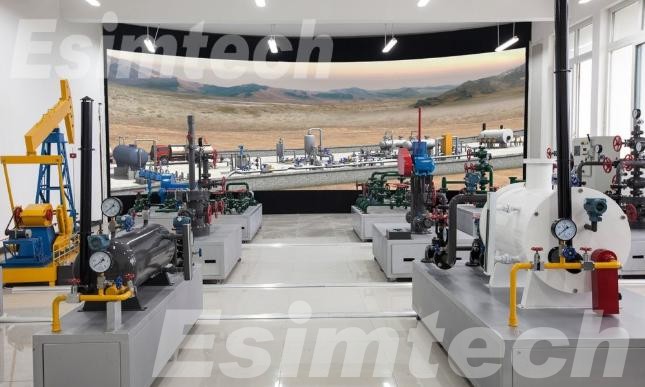
These sophisticated oil recovery simulation platforms enable engineers to run decades of production in hours. They virtually can test how different injection fluids, such as water, gas, chemicals, or steam, will interact with the reservoir rock and the remaining oil. This is not about just visualization; it is about rigorous, physics-based forecasting.
For instance, the engineer can use the software to:
- Determine the most efficient pattern in which to inject CO₂ to maximize both sweep efficiency and sequestration.
- Model the complex reactions of a chemical EOR flood in order to see if it will effectively mobilize trapped oil without causing formation damage.
- Evaluate the economic viability of a tertiary recovery method through a comparison of predicted recovery rates against projected costs.
This capability de-risks decisions at the highest level. Instead of relying on analogies or best guesses, companies can use data-driven insights from simulation in oil and gas industry practices to invest in recovery strategies with the highest probability of technical and economic success. Put succinctly, this software doesn’t just predict recovery; it fundamentally enhances it, ensuring that every last drop of value is responsibly extracted from the asset.
VR Simulation in Petroleum Training Safety
Safety performance in the petroleum industry relies significantly on a person’s capability to recognize hazards, make split-second decisions, and adhere to established safety protocols even under pressure. On the other hand, replicating high-risk scenarios involving confined space entry, working at height, or emergency evacuation during training poses too much risk or disruption in active facilities. VR-based training offers a practical solution, delivering immersive and controlled environments where workers can build safety-critical skills with zero operational risk.
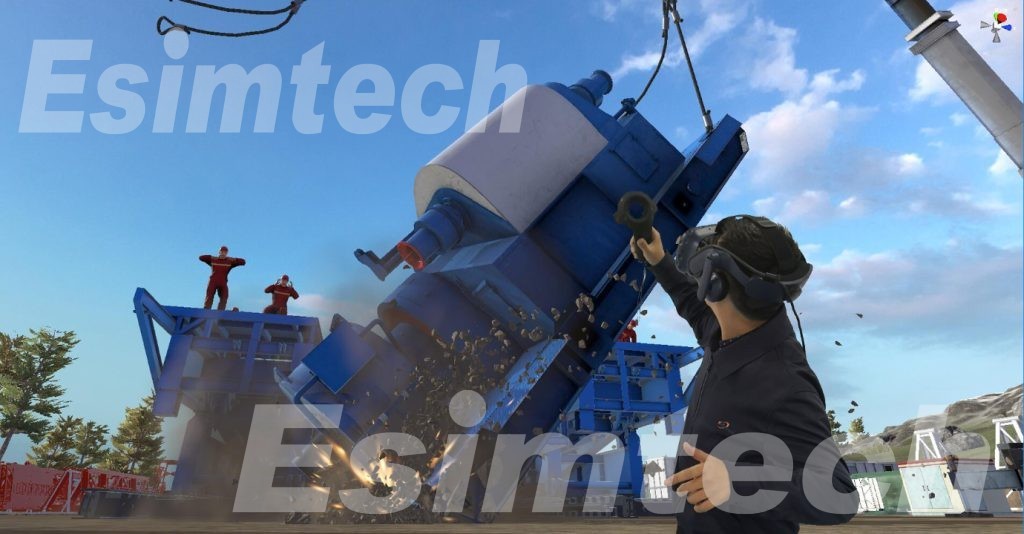
1. Immersive Exposure to High-Risk Environments
VR enables trainees to step directly into realistic representations of offshore platforms, tank farms, confined spaces, or high-temperature areas. They experience visual cues, spatial constraints, and environmental stresses closely resembling real conditions. Such exposure reduces the uncertainty and hesitation that characterizes most of their initial exposures to these settings.
2. Real Behavioral Assessment, Not Just Knowledge Checks
Unlike traditional classroom training, VR can track how people actually behave in a hazardous scenario: where they look, how they move around, whether they maintain safe distances, and if they perform lockout/tagout correctly. Trainers can view decision-making patterns and help correct unsafe tendencies well in advance of the employee entering a live worksite.
3. Multi-Role Emergency Response Drills
Most VR platforms now provide coordinated drills of field operators, supervisors, and control room personnel. Teams can practice incident response sequences such as gas leaks, fires, blowouts, or evacuation procedures, making sure everyone understands their role and the communication pathways. This has greatly increased real-world coordination during emergencies as teams involve multiple roles.
VR is fast becoming a cornerstone of safety development across petroleum operations by offering a realistic, repeatable, highly engaging environment. It helps organizations reinforce safe behavior, improves hazard recognition, and reduces human-factor risks, thus strengthening the overall safety culture.
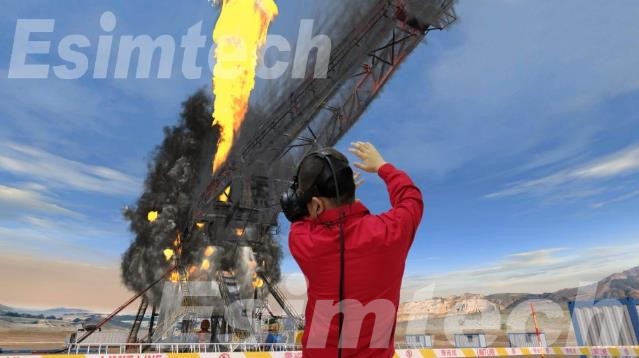
In Summary
High-fidelity simulation is transforming workforce development across the petroleum industry. From drilling and production operations to reservoir management and safety training, oil and gas simulation has proven its value as a practical, repeatable, and risk-free way to build frontline competency.
Modern oil and gas simulation software converts complex operational knowledge to structured, performance-measured learning experiences. With each organization striving to improve safety and operational reliability, simulation in the oil and gas industry is no longer optional; rather, it has become an important component of team preparation for the high-stakes environments in which they work.
Want to learn more? Or are you looking for an Oil and Gas Simulation solution? Feel free to reach out for Esimtech‘s professional suggestions.
